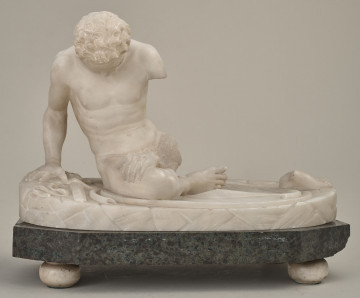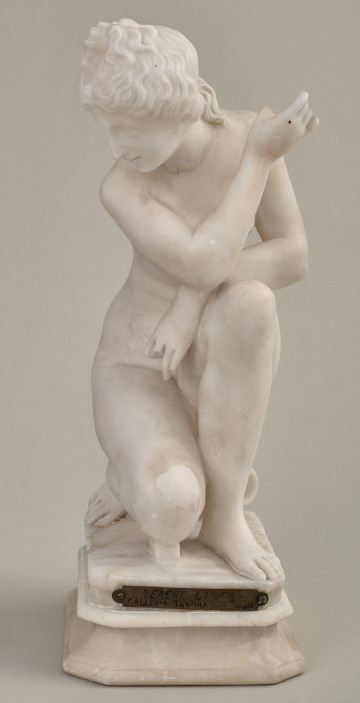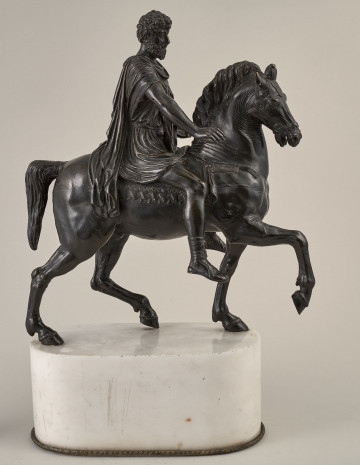
Dying Gal
1800 — 1850
Castle Museum in Łańcut
Part of the collection: Sculptures
A girl with a pigeon The alabaster statue is a reduced copy of an ancient Roman marble statue (height - 95 cm) in the collection of the Musei Capitolini in Rome. The statue was made during the reign of the Antonine dynasty (138-192), according to the Hellenistic sculpture from the 2nd century BC. It comes from the collection of Cardinal Albani, a famous collector of antiquities. The statue depicts a standing girl with her head tilted to the left, dressed in a chiton and a cloak, pressing with her left hand against the breast of a pigeon covered with the end of her robe, protecting it from the attack of a snake crawling on her leg. The wide cloak is draped at the front in thick, cascading folds. The child's round face is embraced by long, curly hair with a distinct double-strand running from the centre of the forehead to the back of the head. The snake is a modern addition in the antique statue, whereas, originally, another, probably domestic animal (a dog or a cat) was in its place. It is assumed that the statue had a sepulchral function. The creator of the Łańcut copy is unknown. The statue was made in the first half of the 19th century. The Museum in Łańcut bought it in 1958 together with an alabaster column on which it is displayed in the Green Salon in the Men's Apartment. Barbara Trojnar
Author / creator
Dimensions
height: 63 cm, width: 25 cm
Object type
Sculptures
Technique
sculpture
Material
alabaster
Origin / acquisition method
zakup
Creation time / dating
Creation / finding place
Owner
Castle Museum in Łańcut
Identification number
Location / status

1800 — 1850
Castle Museum in Łańcut

1800 — 1850
Castle Museum in Łańcut

18th-19th century
Castle Museum in Łańcut
DISCOVER this TOPIC
Museum of King Jan III's Palace at Wilanów
DISCOVER this PATH
Educational path